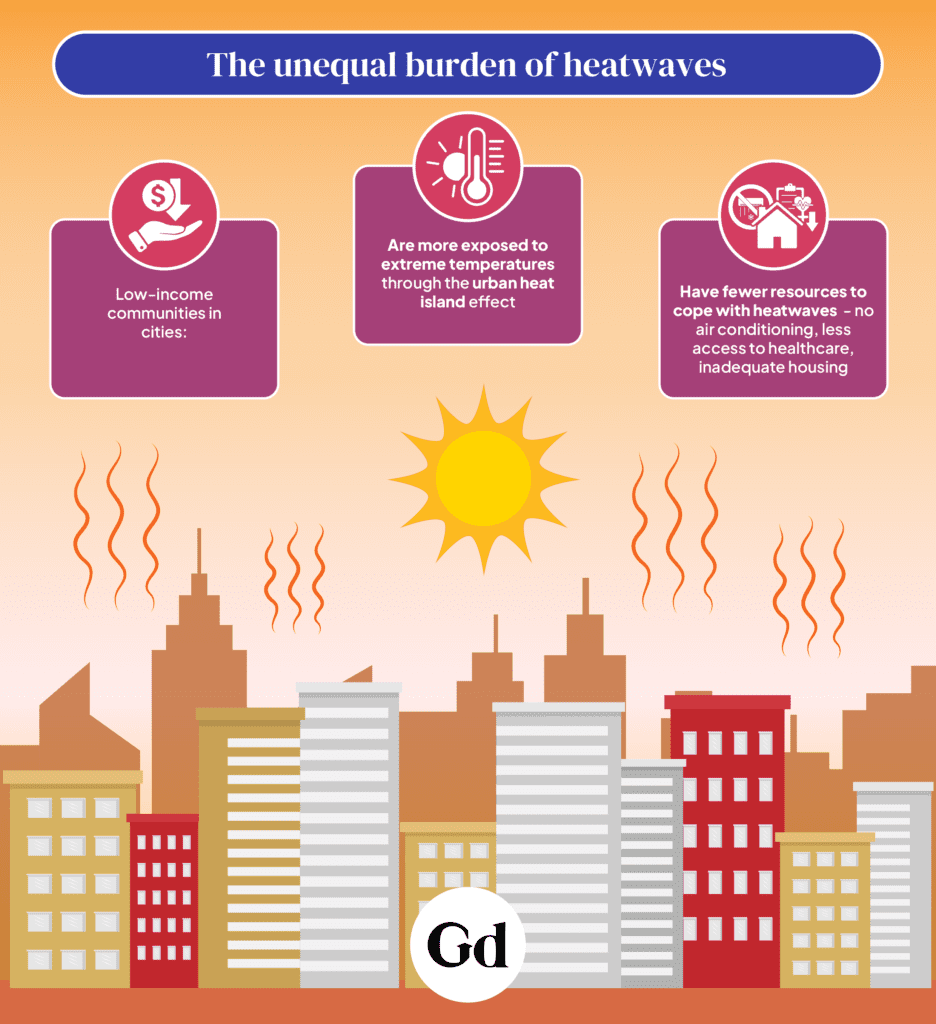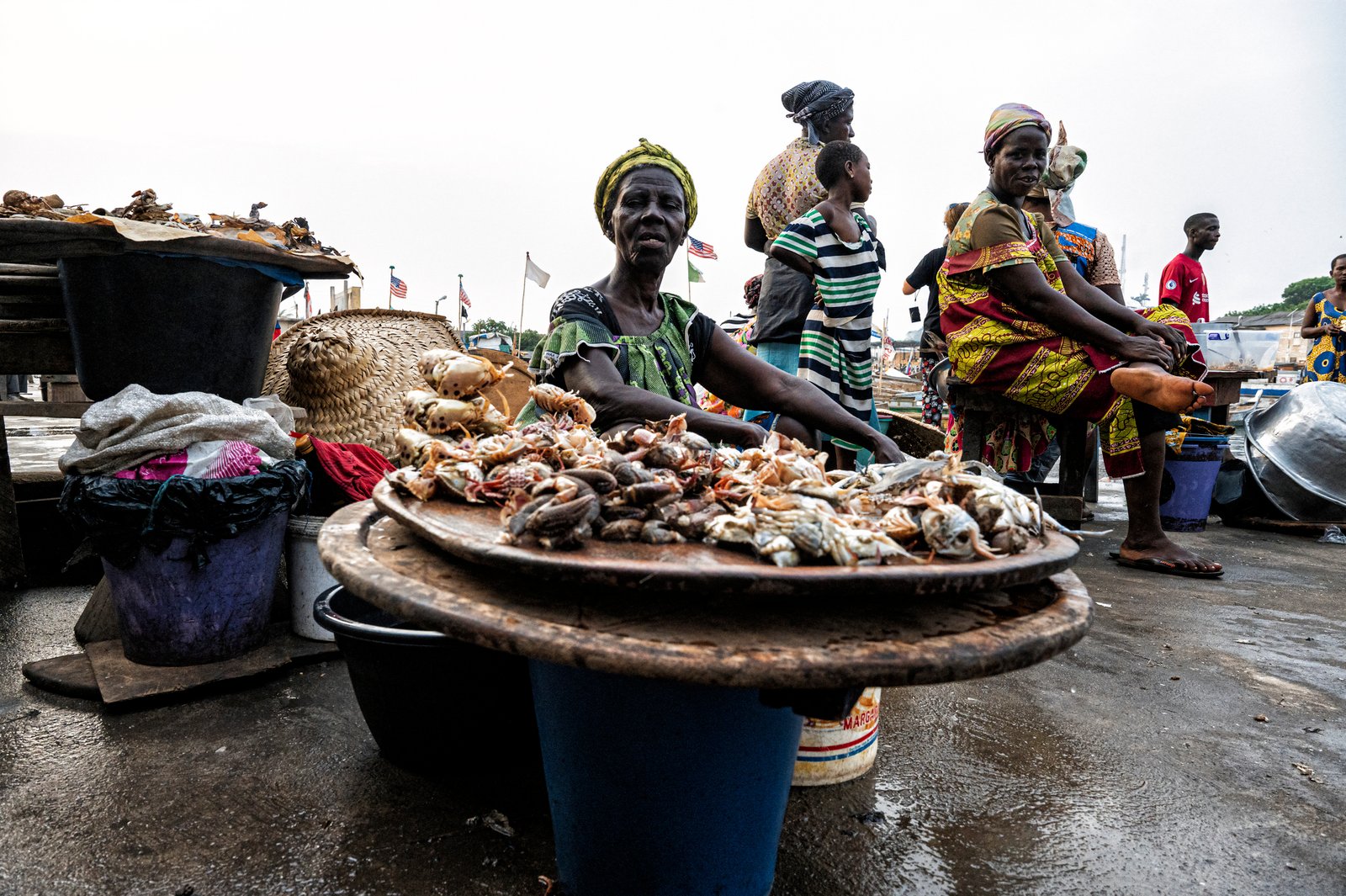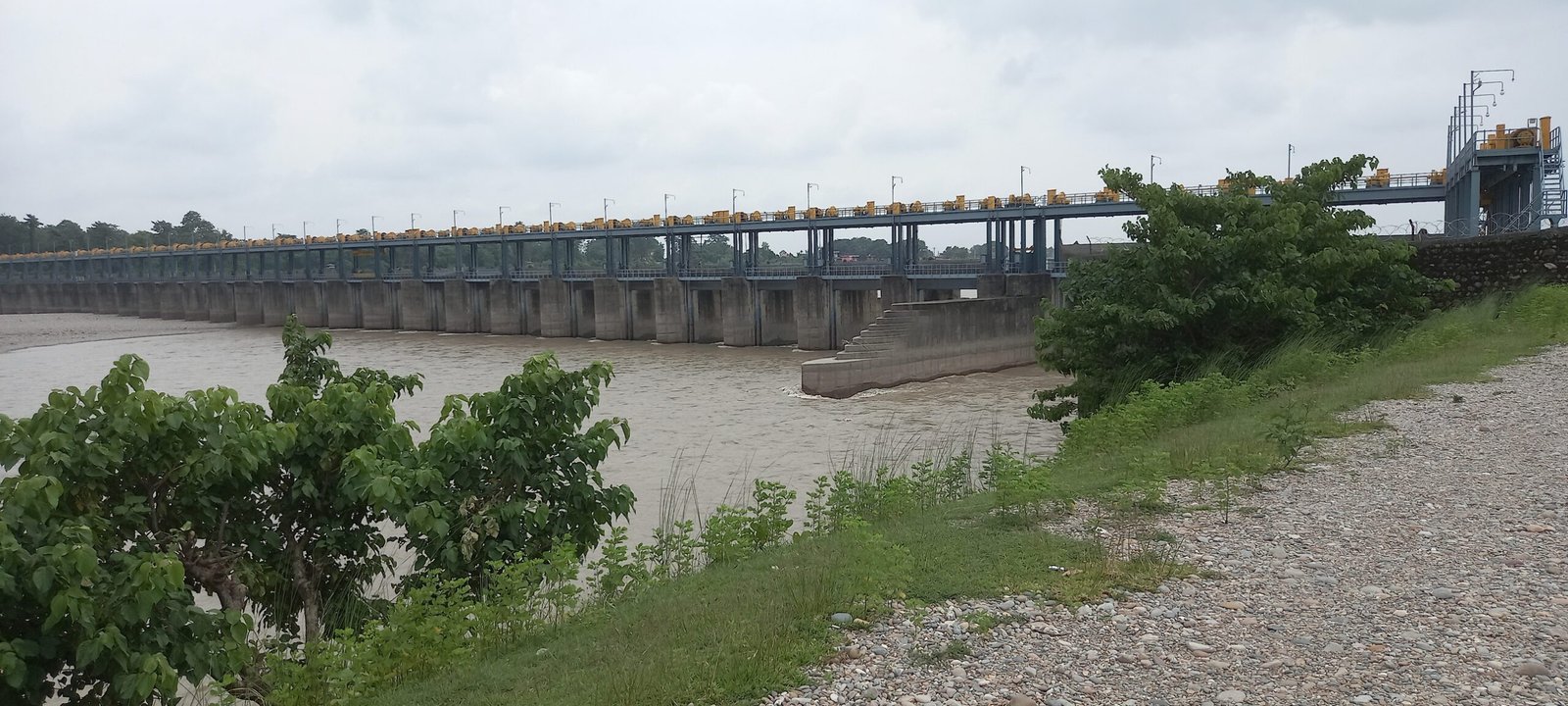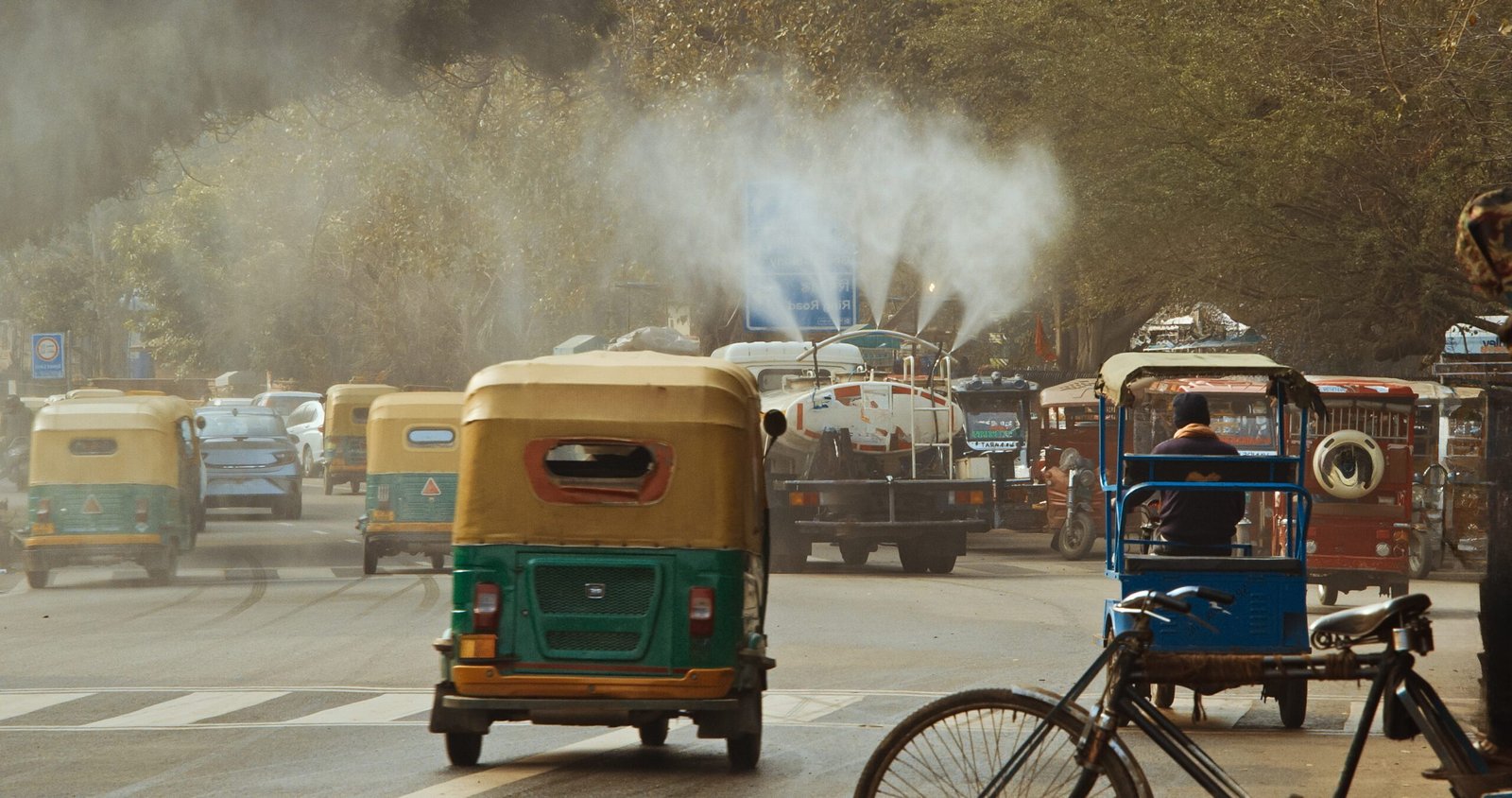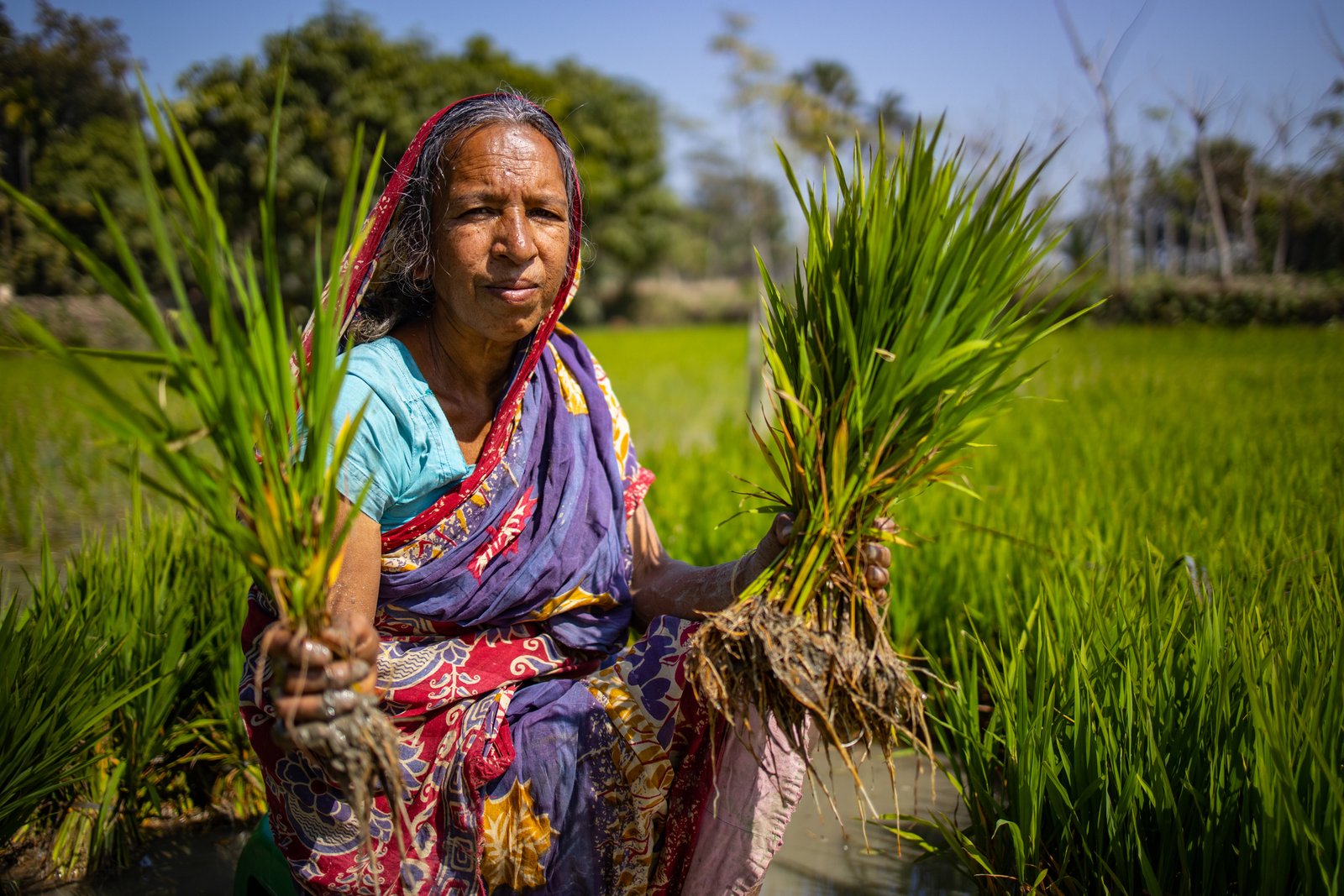The burden of heatwaves is not shared equally across society. This disparity raises important questions about how climate resilience strategies should not only address the environmental challenges of heatwaves, but also the social inequities that they exacerbate. What is more, the strategies themselves must avoid intensifying disparities.
The escalating impact of heatwaves
Heatwaves, extended periods of excessively elevated temperatures, are occurring more frequently and with greater intensity as global temperatures rise. Research shows that the frequency of these extreme events will further increase in the future even if global warming is limited to 1.5 °C. The human cost is staggering: heatwaves can lead to heatstroke, dehydration, and exacerbate pre-existing health conditions that increase mortality rates – especially among the elderly, young children, and people with chronic illnesses.
Rapid urbanization without appropriate and relevant infrastructure development heightens the risks associated with heatwaves. Overloaded power grids, frequent outages, and water shortages leave residents without access to cooling during extreme heat. United Nations figures show that 55% of the global population resides in urban settings, a number expected to rise to 68% by 2050. This projected increase highlights the urgent need for sustainable urban planning and climate resilient infrastructure to minimize the adverse impacts of heatwaves.
Unfortunately, the risks associated with heatwaves are not distributed evenly. Studies show that low-income communities, people of color, and those living in urban areas are far more vulnerable to extreme heat. These groups are more likely to live in highly built-up neighborhoods where the effects of heatwaves are more severe. In many cities, the urban heat island effect, where concrete and asphalt absorbs and retains heat, makes urban areas considerably warmer than their rural surroundings and worsens these risks.
Moreover, these vulnerable communities often have less access to resources that could help them cope with extreme heat. Limited access to air conditioning, inadequate housing, and poor access to healthcare all contribute to higher rates of heat-related illnesses and deaths in these areas. Addressing these disparities is a critical aspect of climate resilience planning, yet it is often overlooked.

Climate resilience strategies
To mitigate the impact of heatwaves, governments have been implementing a variety of climate resilience strategies. One widely adopted approach is urban greening, which involves planting trees, creating parks, and expanding green spaces. These initiatives play a crucial role in cooling urban environments by providing shade and releasing moisture into the air through a process called evapotranspiration.
Research published in the journal Landscape and Urban Planning suggests that small vegetated patches can decrease daytime surface temperatures by up to 6o C. Improving building design and energy efficiency is another key strategy. By designing homes with better insulation, reflective materials, and energy-efficient cooling systems, we can reduce indoor temperatures and make them comfortable for residents.
Public health interventions also play a crucial role in resilience efforts. Early warning systems that alert the public to impending heatwaves, along with cooling centers where people find refuge from the heat, are essential components of these strategies. Cities that have implemented comprehensive heat action plans have seen lower mortality rates during heatwaves compared to those without such plans.
A hot mess of social inequities
While these resilience strategies are essential, they come with their own set of challenges and potential downsides. Urban greening, for instance, can inadvertently lead to green gentrification. As neighborhoods become more desirable due to new green spaces, property values can rise, displacing the very communities that were meant to benefit from these improvements. Energy efficient building upgrades, while effective, often remain out of reach for the most vulnerable populations due to high upfront costs, even with financial aid.
Public health measures are not always as effective as they could be. For example, early warning systems may not reach those without access to technology or those with language barriers or limited language proficiency. Extreme heat prevention measures are not equally accessible to all genders, and the resulting influence on vulnerability is not well understood.
Furthermore, cooling centers are often underutilized due to a lack of awareness, difficulties in accessing transportation, or concerns over safety. This deepens the divide between those protected from extreme heat and those who are not.
Conclusion
The increasing frequency of heatwaves presents a dual challenge: addressing the immediate threat of extreme heat while also tackling the underlying social inequities that make certain populations more vulnerable. While existing climate resilience strategies offer valuable tools, they must be implemented with an awareness of the social dynamics at play. By taking an equity focused approach to climate resilience, we can not only protect more people from the dangers of heatwaves but also build resilient and just communities in the process.
